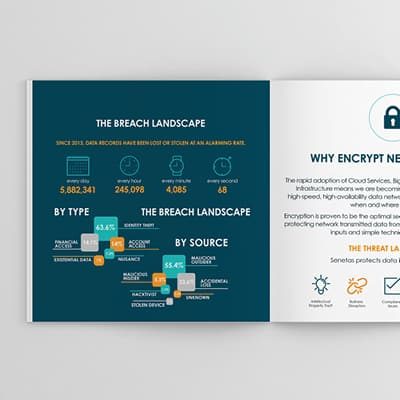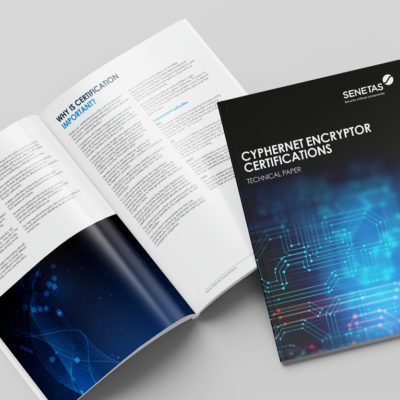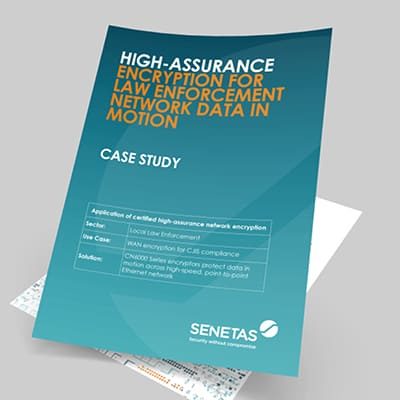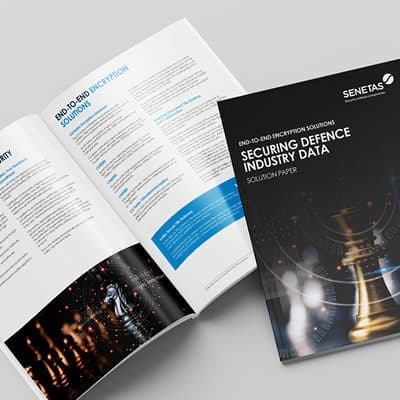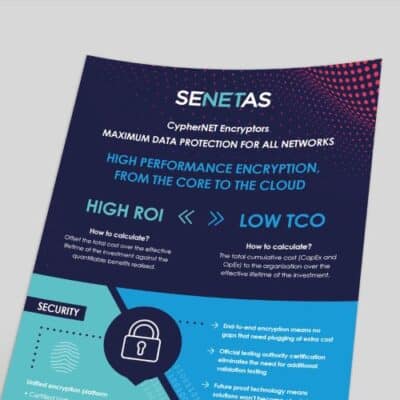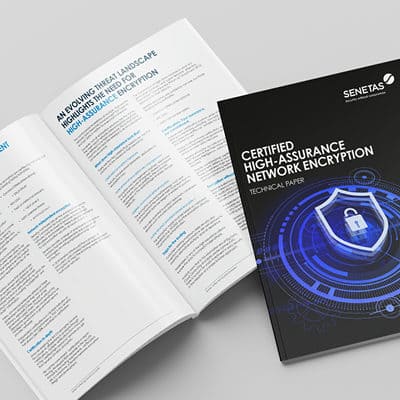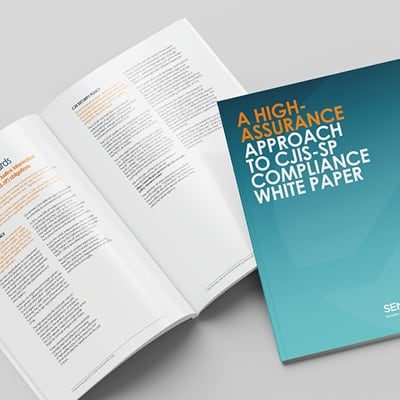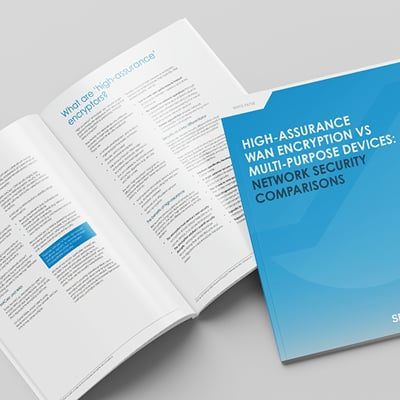Senetas designs, develops and manufactures certified high-assurance encryption hardware to protect all types of data in transit across today’s multi-layer infrastructure, including Ethernet, IP Protocol, Fibre Channel, SCADA Control Systems and CCTV networks.
Senetas encryptors are used to protect sensitive data, metadata, video and voice traffic in transit across high-speed networks up to 100Gbps bandwidth, without compromising network performance.
Senetas is trusted by some of the world’s most secure commercial, government and defence organisations to protect a variety of sensitive and confidential data across a range of network topologies; from global cloud and data centre interconnect traffic, or multipoint-to-multipoint campus traffic, to simple point-to-point and link networks.
What is high-assurance encryption?
As recommended by leading data security and encryption analysts; for a network encryption solution to be truly robust, and provide long-term data protection (well beyond the useful life of the data), it must be a “high-assurance” solution.
Not all encryption solutions are created equal. Multi-function devices – such as network routers/switches with embedded encryption or those using MACSec or similar standards (not originally intended for WAN and MAN security) provide “low assurance” data protection.
By contrast, Senetas CN Series Network Independent Encryption solutions are certified by the world’s leading independent testing authorities as suitable for government and defence applications. They are purpose-engineered for dedicated, high-assurance network data security.
Senetas encryptors’ security credentials include all four essential high-assurance features: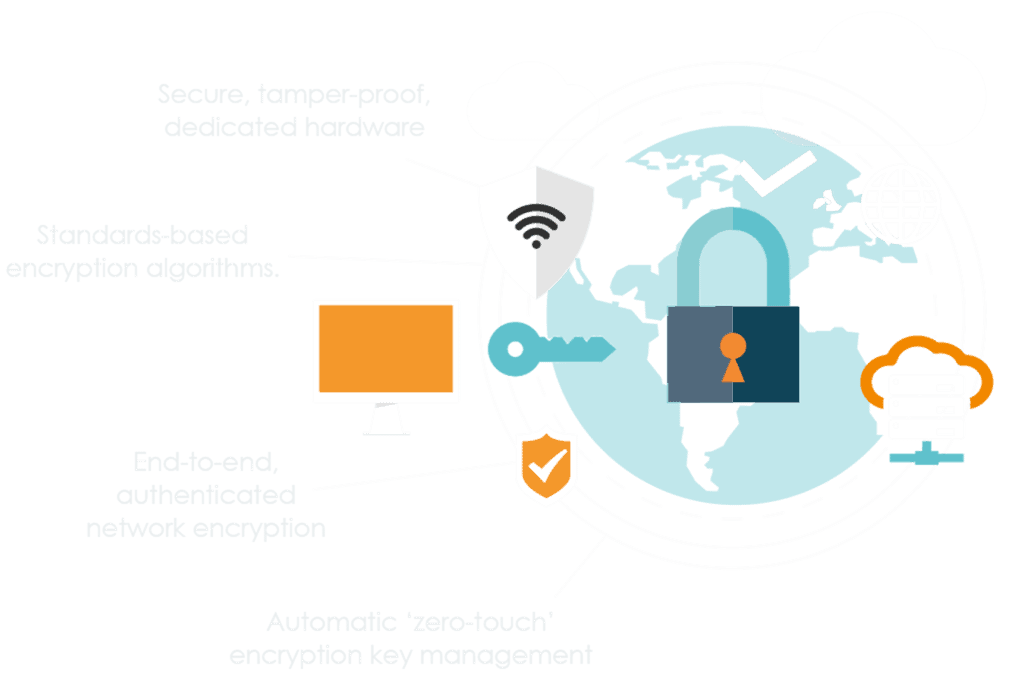
Why is certification important?
Certification by independent testing authorities provides both government and commercial customers with the additional peace of mind that comes from expert, third party product validation. Compliance with these international certification standards is a strict requirement for many governments and defence agencies when it comes to the protection of sensitive data. The need to comply with high-assurance standards often also extends to third parties wishing to provide services to government and defence agencies.
Security product certifications involve rigorous testing procedures, which often take years to be completed. It is not a one-time process but typically an on-going assessment, where even the smallest change to the product requires a process of ‘re-certification’.
These certifications ensure that products are “suitable for government and defence use”. Classification within the certification process determines the level of data sensitivity for which the product is suitable – including “confidential” and “secret” information.
Rigorously tested and certified, our network encryption solutions have been vetted by a broad range of organisations, including:
- National Institute of Standards and Technology (NIST) – FIPS 140-2 Level 3
- Defence Information Systems Agency (DISA) – UC APL
- North Atlantic Treaty Organisation (NATO) – Restricted
- Common Criteria for Information Technology Security Evaluation (CC) – EAL 4+
- Australian Signals Directorate (ASD) – EPL
- French Network Information Security Agency (ANSSI)
Certification In-Depth
Since developing the first CN encryptor, Senetas has chosen to differentiate its products through certifications. Multiple certifications form a key part of the ‘certified high-assurance’ promise you get from Senetas CN series encryptors.
We call this commitment to certifications ‘Certifications In-Depth’. Having developed R&D expertise in the security standards and testing requirements, certifications are a cornerstone of Senetas hardware encryption design and development.
Maximum security without compromising network performance
Whether you’re protecting Big Data applications, Cloud Computing or SaaS applications, data centre services, HD video streaming or SCADA critical infrastructure and industrial control systems; Senetas encryptors provide certified high-assurance security without compromising your networks’ performance.
- Real-time availability of encrypted video, voice and data
- Near-zero latency
- Nominal data overheads
- 100% interoperability among all CN series encryptors
- 100% network device compatibility
Senetas encryptors are crypto-agile, flexible, self-healing and simple to deploy; delivering a low total cost of ownership (TCO) and a high return on investment (ROI).
Senetas is trusted by some of the world’s most secure commercial and government organisations to secure a variety of sensitive and confidential data across a range of network topologies.

